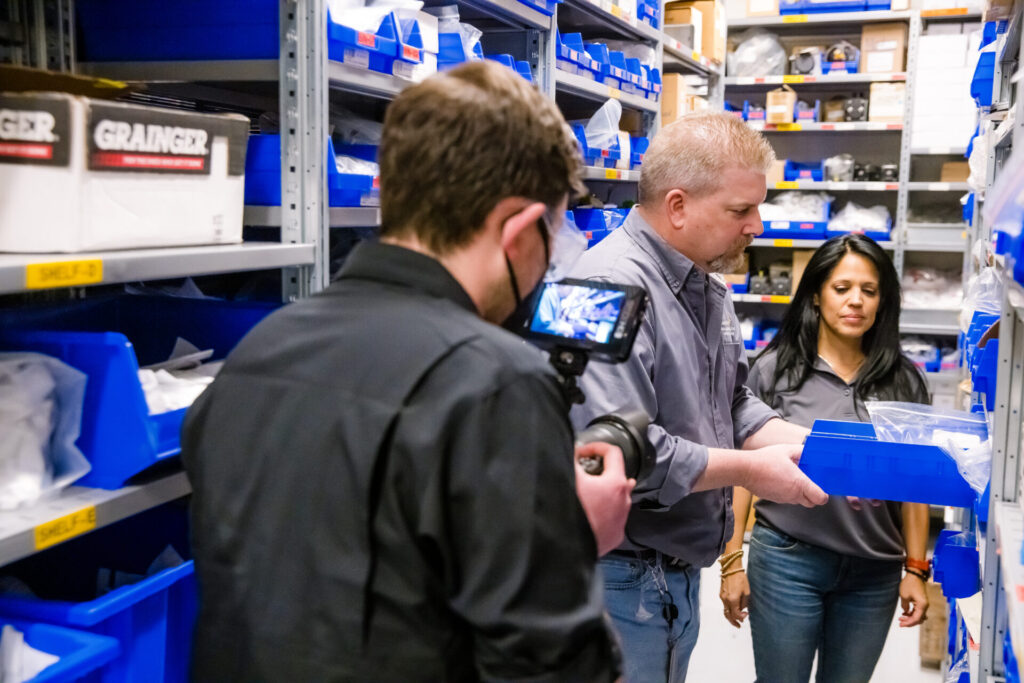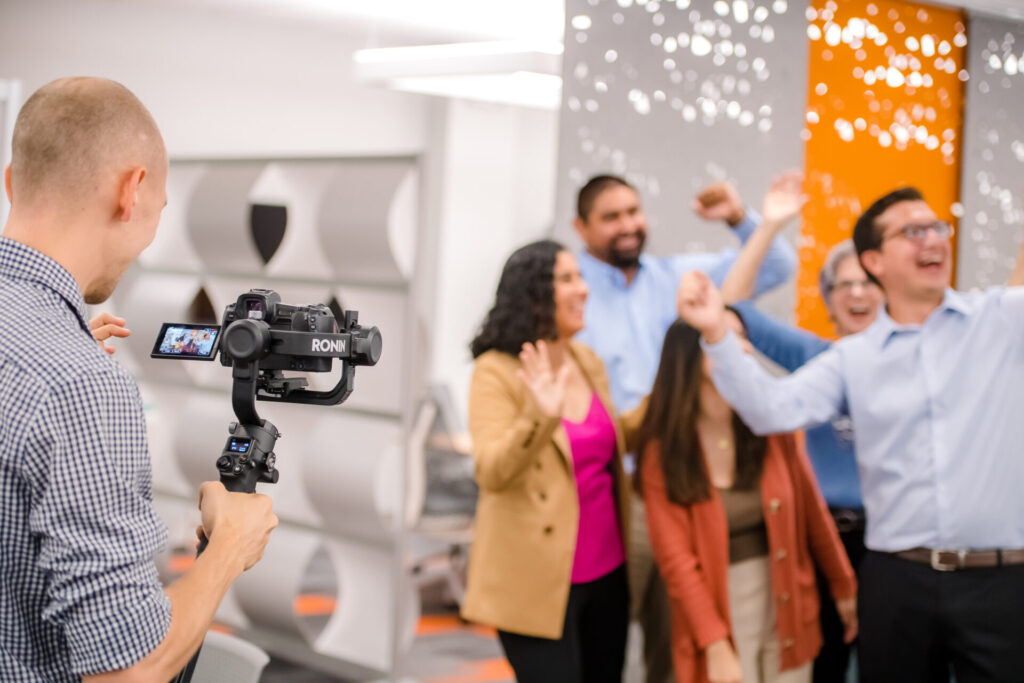Better B-roll Makes for Better Videos
No matter how much B-roll you film, you can never have too much. While people telling stories is ultimately what drives our style of videos, B-roll and graphics make them more engaging.
Working with your filming team on a plan for capturing better B-roll will ensure you have the right footage to work with in your final video edit.
What is B-roll?
The main interview footage of a person speaking is referred to as A-roll. And the supplemental footage filmed is referred to as B-roll.
B-roll in employee storytelling videos is typically footage of someone doing their job, interacting with their team, and of the company environment. It usually doesn’t have audio.
When a post-production team starts editing video, they use B-roll to enhance the story being told in the A-roll footage.
There is good B-roll and there is not so good B-roll.
What should be in B-roll footage?
Your video B-roll should be tailored to what your storytellers are talking about. Uninteresting B-roll will affect the quality and appeal of an employee storytelling video.

The B-roll carries the pacing of the video and gives it more energy. Putting the time and effort into shooting relevant, good-looking B-roll footage is very important for any video.
Tips for filming:
- Plan your interview day around company events to capture more energy and engagement. Events are dynamic and provide a lot of different things (and people) to capture.
- Find an environment that allows for variety. Consider all the ways you’ll be able to capture different footage with the people involved in one location. Look for creative ideas that show vs. tell. B-roll doesn’t have to be literal and can help fill in gaps in the story to accompany the interview.
- Capture authentic moments and look for ways to gamify the experience for your storytellers. Instead of telling them to “look out the window and smile” try, “open the blinds and find something blue in 10 seconds.” People will have more genuine emotion when they have an experience vs. being directed.

What to do if you can’t get relevant B-roll
In some cases, filming someone in their actual work environment isn’t possible. Or, they tell a personal story that can’t be captured in B-roll during your filming day.
If this happens, there are still ways to enhance a story through photos and other imagery that a storyteller may be able to provide later.
- Use photos: If your video includes a personal story about someone’s family, an experience outside or work, or something that happened to them in the past, a great way to visually level up their story is by including personal pictures. We use this tactic often for stories of veterans and their military service, and for stories that relate to past events in someone’s background.
- Use other video footage: Sometimes, a storyteller shares an experience that was captured on video at another time. Asking them for that video footage and including it in the final edit will bring that story to life in a totally different way.
A lot goes into planning a successful day of filming from choosing an interview location to identifying the right B-roll to match the stories shared during the interviews.
A well-rounded combination of meaningful stories (in the A-roll) and attractive B-roll will effectively capture (and hold) your viewers’ attention which will result in more people watching (and finishing) your video.
The more views a video gets, the more of your audience you reach.
If you’re looking for a team to partner with on content creation, get in touch. We’d love to help bring your stories to life.

